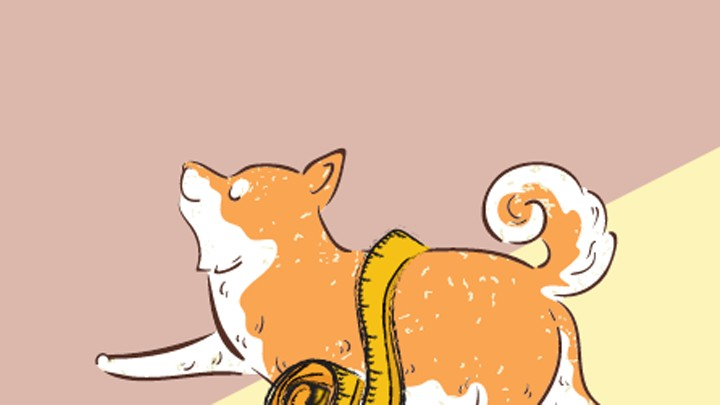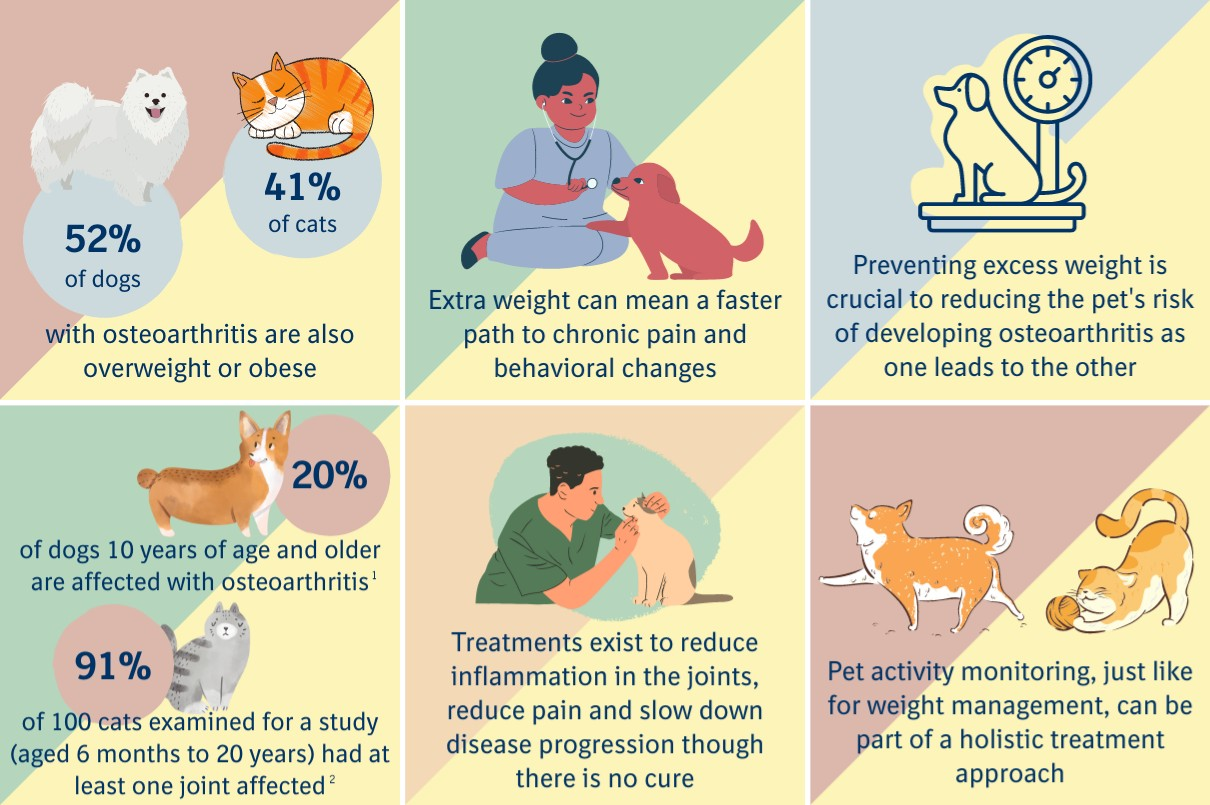Obesity in pets: a blind spot!
Is your four-legged friend getting a little chubby? You’re not alone! A clinical survey from the Association of Pet Obesity Prevention (APOP) shows that 55.8 percent of dogs and 59.5 percent of cats in the U.S. are currently overweight. The same trend is growing in the UK, Germany, and France. What does this mean for pets and their owners, and how can we promote the health of our overweight companions? Find answers here.
Same as with humans, body weight is just one indicator among many when it comes to a pet’s health status. However, there are some diseases associated with it: joint disease, diabetes, cardiovascular problems, breathing issues, and certain types of cancer to name a few.
Step one: awareness
Many of these are diseases which are more commonly known to affect humans than pets. However, with pets living longer lives and increasingly being perceived as family members – which comes with the occasional extra indulgence for some – the rate of obesity among our furry companions is ever rising.
It’s important for veterinarians to educate on this topic and have it on their radar during examinations. This can be key to preventing many of the diseases associated with pet obesity because many pet owners don’t even realize it’s an issue: between 44 and 72 percent underestimate the weight status of their pet, leaving them unable to realize its impact on health.
Spotlight on osteoarthritis
Osteoarthritis is a prominent example for joint diseases that often stems from elevated weight levels and offers insights into how pet owners can manage these kinds of diseases:
A need for holistic thinking
As with osteoarthritis, numerous diseases that stem from excess weight need to be tackled holistically. Causes for obesity are complex: Cats and dogs are hunters by genetics, much like humans. However, in the past 50 years, their living environment completely changed. They are getting fed and cared for by their owners, and their metabolism hasn’t been able to adapt in such a short time-period. To compound this, neutered cats are especially prone to obesity as the alteration in sex hormones lowers metabolic rate. Additionally, they have a reduced inclination to roam compared to non-neutered cats. This is why we should beware of simple solutions. As Dr. Ernie Ward, APOP President says, veterinarians need to start offering more advice other than: Feed less and exercise more.
Long-term – even chronic – disease management, new therapeutic options, sustainable lifestyle changes and technological advancements will play a key role. The market for pet diabetes care devices, for example, is projected to grow to $2.8 billion by 2025 from $1.5 billion in 2018, and devices are becoming more popular in pet care overall.
Act now to address a future issue
In many parts of the world, there’s no indication that this trend is going away anytime soon. In fact, as countries in the Global South are becoming more affluent, obese pets are bound to become ever more common. Veterinarians will play a key role in advising pet owners and managing the health and well-being of these pets. And the scientific community as well as the animal health industry will need to do their part to support them along the way.
References
2. Lascelles B.D.X., et al. Cross-sectional study of the prevalence of radiographic degenerative joint disease in Domesticated Cats: Degenerative Joint Disease in Domestic Cats. Vet Surg. 2010 Jul; 39 (5): 535-544.
Post time: Jul-26-2023


